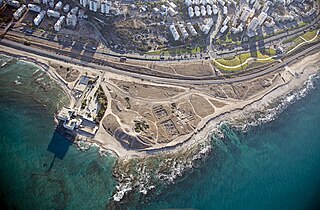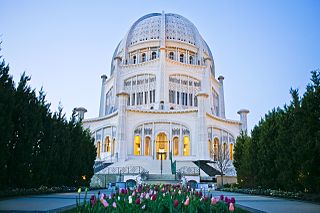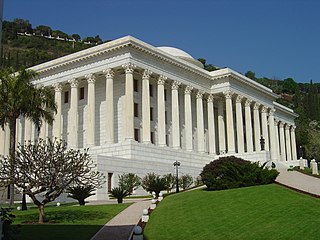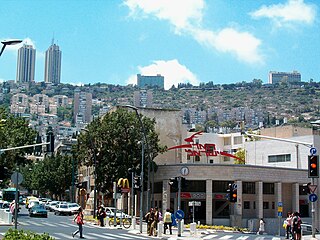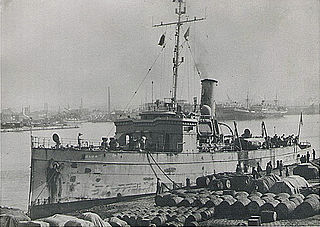8 Sights in Haifa, Israel (with Map and Images)
Legend
Premium Sights
Book tickets, guided tours and activities in Haifa.
Guided Free Walking Tours
Book free guided walking tours in Haifa.
Welcome to your journey through the most beautiful sights in Haifa, Israel! Whether you want to discover the city's historical treasures or experience its modern highlights, you'll find everything your heart desires here. Be inspired by our selection and plan your unforgettable adventure in Haifa. Dive into the diversity of this fascinating city and discover everything it has to offer.
Activities in HaifaTell es-Samak, or Tel Shikmona, also spelt Sycamine, is an ancient Phoenician tell (mound) situated near the sea coast in the modern city of Haifa, Israel, just south of the Israeli National Institute of Oceanography. It has been called a "forgotten Phoenician site". Nowadays researchers identify Tell es-Samak with Porphyreon (south).
2. Centre for the Study of the Texts
A Baháʼí House of Worship or Baháʼí temple is a place of worship of the Baháʼí Faith. It is also referred to by the name Mashriqu'l-Adhkár, which is Arabic for "Dawning-place of the remembrance of God".
3. Ahi Dakar
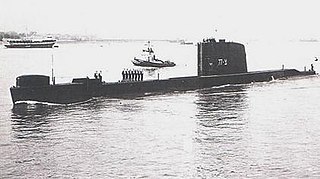
INS Dakar was a diesel–electric submarine in the Israeli Navy. The vessel, a modified World War II British T-class submarine, had previously been HMS Totem of the Royal Navy. She was purchased by Israel from the Government of the United Kingdom in 1965 as part of a three T-class submarine deal.
4. Bahá'í gardens
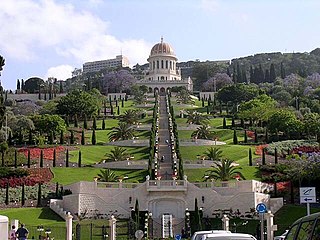
The Baháʼí Terraces, or the Hanging Gardens of Haifa, are garden terraces on Mount Carmel in Haifa, and one of the most popular tourist destinations in Israel. Completed in 2001, there are 19 terraces and more than 1,500 steps ascending the mountain. The central terrace has the Shrine of the Báb, one of the main religious sites of the Baháʼí Faith. The architect was Fariborz Sahba from Iran, and the structural engineers were Karban and Co. from Haifa.
5. אנדרטת אחי אילת
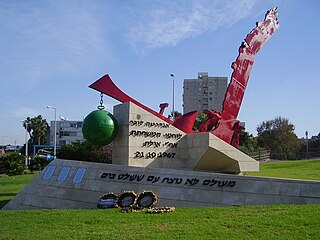
The memorial to the fallen of the destroyer Eilat in Haifa is one of the memorial sites for the 47 fallen soldiers of the INS Eilat (K-40), which was sunk by sea-to-sea missiles in international waters near Port Said on October 21, 1967.
6. Universal House of Justice
The Great House of Justice is an elected body to administer the affairs of the Bahá'í Community worldwide, and is the highest administrative body of the Bahá'í Faith, headquartered at the foot of Mount Carmel in Haifa, State of Israel. The Bahá'í administrative system was based on a foundation different from other religious and administrative systems. This system is built on the foundations and principles proclaimed by Bahá'u'lláh in the Holy Book, which contains the rulings of the Bahá'í Faith. Bahá'u'lláh explicitly appointed His Son the Arshad 'Abdu'l-Bahá as interpreting and clarifying His teachings. 'Abdu'l-Bahá defined the administrative institutions, explained the requirements and manner of establishing the Great House of Justice and its powers, and created the position of guardianship, to whom his grandson Shawqi Effendi Rabbani was appointed to assume it after his death.
7. Gan Binyamin
Hadar HaCarmel is one of Haifa's oldest neighborhoods and a central residential quarter in the city. Hadar was established as a "garden city" according to Richard Kaufman's plan in 1922. The term "Hadar" includes the collection of neighborhoods located on the step between the lower city and the Carmel. In the past, the significance was more limited, and the Hadar neighborhood was defined by the streets east of the Herzliya neighborhood, whose land was purchased as early as 1907, and a little east of present-day Balfour Street. Subsidiary neighborhoods, which were established from all sides, soon merged, some of them losing their name and identity, and were included in "Hadar HaCarmel", and together they now constitute a district with an area of 2.83 square kilometers, about 4.4% of the jurisdictional area of the city of Haifa.
8. Haim Arlosoroff
USCGC Unalga (WPG-53) was a Miami-class cutter that served in the United States Revenue Cutter Service and later the U.S. Coast Guard and U.S. Navy. The early part of her career was spent patrolling the Pacific coast of the United States and the Bering Sea. After 1931 she did patrol work off Florida and in the Caribbean. After Unalga was sold in 1946, she was renamed after Jewish Agency leader Haim Arlosoroff and used for six months for moving Jewish refugees from Europe to Palestine before being forced to run aground by British Navy ships near Haifa.
Share
How likely are you to recommend us?
Disclaimer Please be aware of your surroundings and do not enter private property. We are not liable for any damages that occur during the tours.
